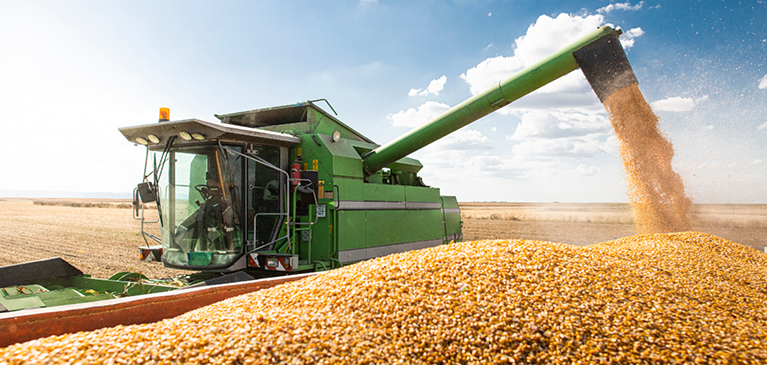
Corn and Soybean Market Update
Corn and soybean harvest is ahead of schedule across the U.S. thanks to favorable harvest conditions. Not only are the crops coming in early, they’re packed with yield. Nationwide, USDA is predicting record crops in both commodities.
Soybeans in Michigan
Michigan is expecting a state record as well with the average corn yield per acre a predicted 179 bushels, according to USDA, and a record soybean yield of 52 bushels per acre.
After the Corn Marketing Program of Michigan’s annual yield tour in August, Kristin Poley said the corn estimate may be a little low. As the CMPA research and agronomy director, Poley said Michigan corn farmers could see an average of 181 bushels per acre fueled by timely and abundant rains throughout most of the season.
The previous statewide average record came in 2021 at 174 bushels per acre.
Soybean yields are anywhere from less than 20 bushels to 85 bushels per acre,” says Kim Knoerr, GreenStone Farm Credit Service vice-president of agribusiness lending out of Caro. “It just depends on where you live, geographically, and what type of weather you had.”
Knoerr, who farms with his brother Ross near Freeland, MI recorded an average soybean yield in the low-to-mid 60s.
Corn has been phenomenal for some. “I know a grower near Frankenmuth who had an 80-acre field that produced 311 bushels per acre on non-irrigated ground,” he says. “And that farm average 257 bushels per acre on 900 acres.”
Corn Yield in Michigan
To those wondering if corn will produce high yields in 2025, the answer is yes. The crop carry-outs on both corn and soybeans are at levels not seen since the 2015-2019 era. According to Knoerr, the corn stock-to-use ratio is predicted to be over 13%. “It's a bearish market because there’s a lot of inventory out there. In Michigan, I have not talked to a single grower this year who has said their corn crop is below average. Unfortunately, with that much corn, it means the basis is weak for the farmer.”
Data from the National Agricultural Statistics Service and the National Corn Growers Association suggests U.S. farmers are dealing with the largest on-farm corn stocks since 1988.
“Strong commodity prices in the last 2-3 years have helped many farms increase their working capital position,” Knoerr adds. “A lot of farmers, from a cash standpoint, are sitting pretty good. But we do see stressed farmers as well, not all areas had good crops the last three years. There have been some areas with damaged crops when prices were good, but yields were not. It’s across the board for our growers.”
Wisconsin Corn & Soybeans
As of October 1, the corn yield per acre in Wisconsin is anticipated to average 182 bushels per acre, an increase of 6 bushels from the previous year. The USDA’s projection for soybeans in Wisconsin in October was 53 bushels per acre, up 2 bushels from 2023.
Wisconsin corn yields are anticipated to average 182 bushels per acre, which is an increase of 6 bushels from the previous year.
For the U.S. the USDA projects the following for 2024:
• Corn yield: 183.6 bushels per acre, a 6.3-bushel increase from 2023.
• Soybean yield: 53.3 bushels per acre, a record high.
• Corn planted acreage: 90.7 million acres, a 4% decrease from 2023.
• Soybean planted acreage: 87.1 million acres, unchanged from 2023.
The higher yields are welcomed as market prices remain downbeat. However, with U.S. soybean ending stocks at 550 million bushels and with high yields coming out of South America, it's pushing the global stocks-to-use ratio for soybeans to a whopping 33.1% -- the highest it's been since 1965.
“In the last 15 years, South America has doubled their soybean production, and it now accounts for 40% of the global out of soybeans,” Knoerr says. “South America also accounts for nearly 60% of all soybean exports in the world.”
According to the USDA, the projected prices for corn and soybeans in the 2024/25 season are:
• Corn: $4.20 per bushel on average
• Soybeans: $10.80 per bushel on average
“Outside of a weather event or geopolitical event, prices look pretty bearish,” Knoerr says.


